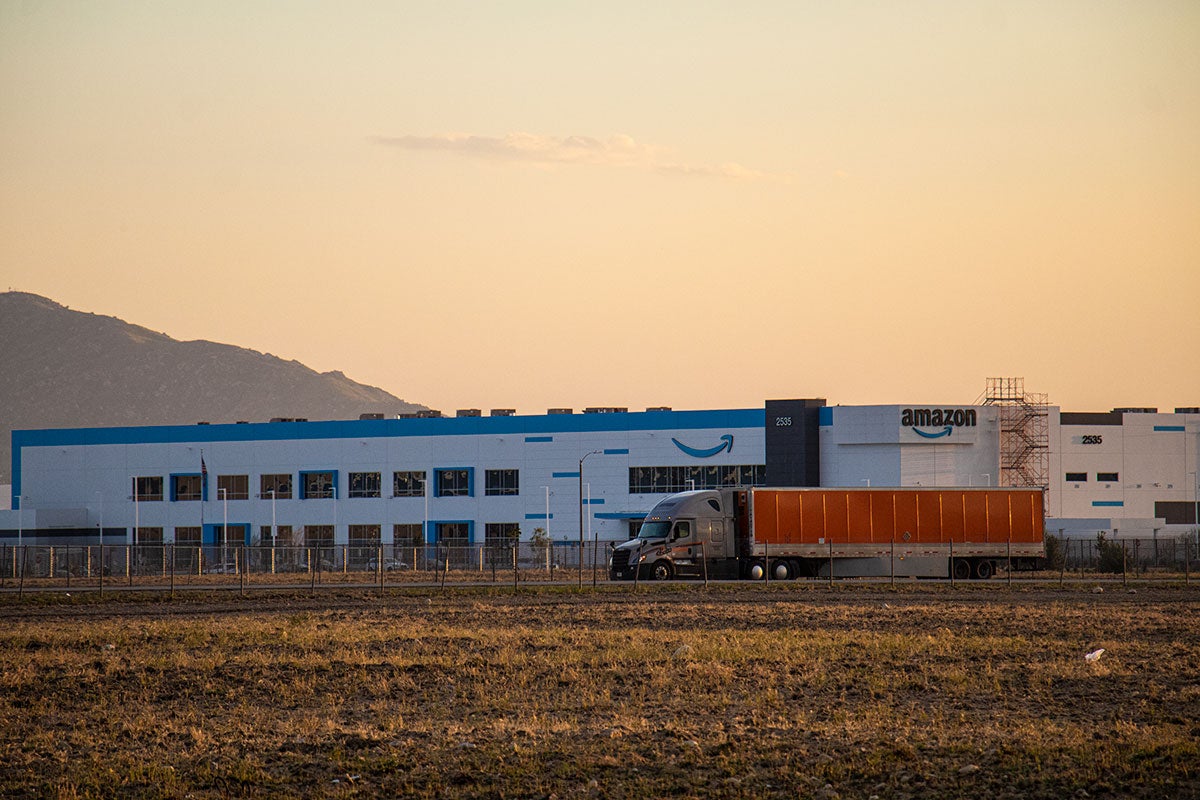Warehouses, Pollution, and Social Disparities
New report on warehouses provides analytical view of the logistics industry’s impacts on environmental justice communities across Southern California.
On May 7, the South Coast Air Quality Management District (SCAQMD) in Southern California will consider approving an Indirect Source Rule for warehouses that will attempt to address the pollution impacts caused by these magnet sources by ensuring that they are built and operated in a way that eliminates emissions from diesel trucks and other mobile sources of pollution.
In an effort to educate the SCAQMD and the general public about the severity of the warehouse industry’s impacts on local air quality and public health, advocates with the People’s Collective for Environmental Justice (PC4EJ) and students at the University of Redlands worked collaboratively to produce an analytical report that looks at the logistic industry’s socioeconomic impacts on our communities.
This report will serve as an advocacy tool to help raise awareness related to the warehouse industry’s impacts on Southern California’s air pollution issues and raise urgency for the Indirect Source Rule and other important policy levers that look to advance zero-emission technology and fight for clean air.
Anthony Victoria
Amazon’s Eastgate Terminal in San Bernardino, which breathes some of the most polluted air in the country.
The following are top findings from the report:
- Existing data shows that the top 10 communities in the South Coast Basin with the most warehouses also experience pollution from other toxic facilities, such as gas plants and oil refineries.
- The report also demonstrates that the average percentile for traffic across warehouses is 67% compared to the state average of 50% and showcases how land use and zoning ordinance changes approved through local municipal and county governments have resulted in warehouses being constructed in already pollution-burdened and poverty stricken areas.
- Of the 3,712 schools located in the South Coast Air Basin, 473 schools are located within half a mile of disadvantaged communities and 242 schools are located within half a mile of disadvantaged areas where there is at least one warehouse already sited.
From our gathered research and data, it’s evident that the warehouse industry has failed to take into account the public’s health when building their facilities near communities of color. From cumulative impacts on air quality to unjust land use and zoning decisions, the impact warehouses and the global goods movement has on environmental justice communities is a textbook form of environmental racism.
Therefore, we urge the South Coast Air Quality Management District to keep true to its promise of pursuing environmental justice by adopting a strong Indirect Source Rule.
This map of Southern California shows how warehouses (the blue dots) coincide with worse traffic.
Xavina Walbert / University of Redlands
This map shows how warehouses (the yellow dots) are concentrated in low-income communities.
Caroline Kelly / University of Redlands
The California Regional Office fights for the rights of all to a healthy environment regardless of where in the state they live; we fight to protect the magnificent natural spaces and wildlife found in California; and we fight to transition California to a zero-emissions future where cars, trucks, buildings, and power plants run on clean energy, not fossil fuels.
